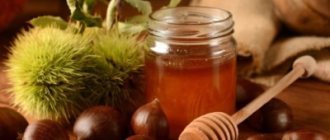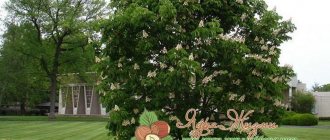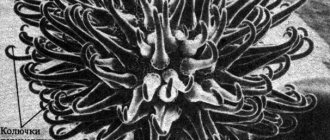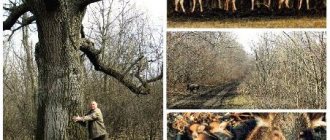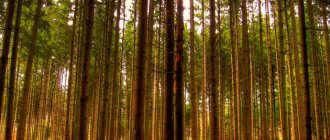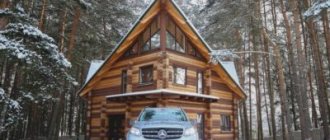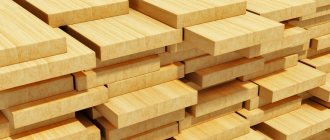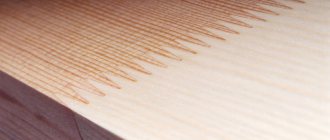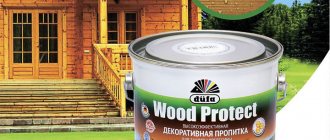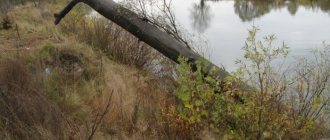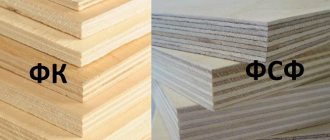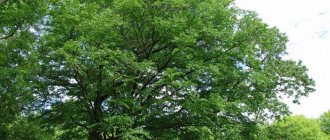Home \ Products \ Lumber \ Chestnut
Categories
For selecting boards (lumber) of any species, you are charged +20% to the prices indicated on the website. Details by phone +7 (812) 507-80-40
Wood has long played an important role in human life. For many millennia, people built houses from wood, made dishes, household equipment, and toys. And nowadays, most people value the naturalness and frequency of wood and strive to surround themselves with environmentally friendly products.
Chestnut
Durability, beautiful texture, and high technological properties have ensured that chestnut wood is widely used. It is used in shipbuilding, the production of exclusive furniture, and also, due to the high concentration of tannins in it, for wine barrels.
| Variety | State | Treatment | Thickness | Length | Price m³ without VAT | Price m³ with VAT |
| 0-1 | dry | edged | 30 mm | 1000-2000 mm | 90,000 rub. | 105,000 rub. |
| 0-1 | dry | edged | 50 mm | 500-950 mm | 55,000 rub. | 63,000 rub. |
| 0-1 | dry | edged | 50 mm | 1000-1950 mm | 90,000 rub. | 105,000 rub. |
| 0-1 | dry | edged | 50 mm | 2000-4000 mm | 10,000 rub. | 108,000 rub. |
Leave a request for: Chestnut
Chestnut. general information
The Chestnut tree genus belongs to the beech family and has about 25 species. Varieties of edible and decorative chestnut grow in Russia. In total, about 12 species. Edible chestnut grows in the Krasnodar region and Crimea. In the rest of the habitat, chestnut fruits are not edible. The fruits are similar to each other, but they can still be distinguished quite easily.
- Flowering horse chestnut, inedible chestnut
- Edible chestnut blossom
- The fruits of the inedible horse chestnut
Chestnuts are deciduous trees. They grow on average 20-25 meters in height. The average lifespan of a tree is 250-350 years. The rounded crown of the tree is wide, reaching a diameter of 20-25 meters.
The chestnut tree blooms in the spring for several weeks. The chestnut inflorescences are very beautiful, they look like decorations, in the form of pinkish candles. Chestnut trees usually begin to bloom from 8-10 years of age.
Chestnut grows in almost all types of soil. But it still prefers moist, loose, non-saline soils. This applies to the inedible chestnut. Edible species are more whimsical. They grow in warm climates and on fertile soils.
Chestnuts often become decorations in park areas. This is due to its decorative properties and resistance to the urban environment. Chestnut loves the sun, but can also grow in the shade.
Lumber
Interesting: The largest tree of the Chestnut genus grows in Spain. Hundreds of horses named him Chestnut. The age of the tree, according to various sources, is from 2000 to 4000 years, and the diameter of the trunk is more than 57 meters. The Hundred Horse Chestnut is listed in the Guinness Book of Records as the tree with the widest trunk. Above ground, the chestnut tree has several trunks, but they all grow from a single root.
Purchasing chestnut boards
Our company sells lumber, furniture panels, false beams and finished products made from valuable wood species, including chestnut. Edged boards are one of the most popular materials in the construction and interior decoration of residential premises. We always have dry edged boards with a thickness of 30 mm and 50 mm in stock. The length of lumber varies from 500 mm to 4000 mm. We offer our customers high-quality products - dried, selected and first-grade chestnut edged boards. Selected board is an elite material that does not have the slightest defects. A grade 1 board may have a small number of minor defects - knots and cracks. You can check the price of lumber on the website or by calling a consultant; here you can place an order, find out the payment method, and order transport for delivery.
Chestnut. Properties of wood
Chestnut wood is a heartwood, ring-vascular species. The sapwood is narrow, light, with a gray tint. The kernel is darker brown in color. Chestnut wood has a beautiful, distinct texture. The fibers are arranged straight. Tree rings are clearly visible. Medium drying breed. Wood density is 490-565 kg/m3, depending on age and growing conditions. Chestnut growing high in the mountains has a lower density, about 390 kg/m3.
Chestnut wood is resistant to biological damage, more resistant to oak. Chestnut wood is easy to process. Easy to cut, polish, saw. Accepts etchings, paints and varnishes well.
During drying, chestnut wood may crack and warp, but to a lesser extent than oak wood.
Chestnut wood is used in shipbuilding and produces exclusive furniture due to its beautiful appearance and high technological properties. Chestnut wood contains a large amount of tannins, so it is widely used for the production of wine barrels and for storing whiskey, brandy, rum, wine, and cognac.
Carpentry workshop
In this article I want to describe some types of wood that are often found in Russia. Compare the properties of wood, and also consider methods of its processing and use.
BEECH
Botanical name: Fagus sylvatica.
The German name is Rotbuche, the English name is Beech, the Italian name is Faggio.
A powerful tree from the beech family (Fagaceae A. Br.), up to 40 meters high and a trunk up to one and a half meters thick. Widely distributed in Europe, traditionally used for the manufacture of parquet floors.
Beech wood is light, with a reddish-yellow or grayish tint (hence the name red beech in contrast to the so-called “white beech” - hornbeam), the annual rings are weakly expressed. Due to the homogeneous structure of the wood, beech flooring visually looks calm, warm, even soft.
Beech is a hard and durable tree, not inferior in this regard to oak. It is well processed with cutting tools and polished. The pores of beech are very small, so the wood after sanding is smooth and does not develop strong brushing over time. It is usually used for parquet floors and for making furniture, including bent, so-called “Viennese” furniture (the idea of the Thonet brothers), for various kinds of crafts. Beech quickly reacts to changes in humidity and in this regard is the so-called “capricious”, or, as is classified in Germany, a “nervous” species, it is easily pricked and cracked, it is quite hard, but fragile, it is not particularly durable in the air and is often subjected to damage by insects. The use of water-based varnishes, adhesives and primers is not recommended. Beech wood lends itself well to special heat treatment, which evens out its color and shifts it towards redder tones (the so-called “smoky” beech). Before coating with polyurethane varnishes, it is necessary to apply primers to prevent “ignition” of the wood.
Volumetric weight in air-dry condition: on average about 650 kg/cub.m.
| Hardness | Stability | Oxidation state | Expressiveness of texture | Shrinkage rate | Load resistance |
| average | low | low | poorly expressed | high | average |
CHERRY (CHERRY)
Botanical name – Cerasus avium,
The German name is Kirschbaum, the English name is Sweet Cherry tree.
Bird cherry or sweet cherry is a well-known tree from the Rosaceae family (Rosiflorae) with a height of up to 30 - 33 meters and a trunk diameter of 40 - 60 centimeters. It grows wild and is grown as a cultivated plant in Europe (except for the northern regions), Asia Minor, the USA and some countries of Central America.
The sapwood of cherry wood is narrow and yellowish. Mature wood is pink-brownish, sometimes pink-grayish. The structure of the wood is even-grained with a relatively uniform texture. Cherry wood is very decorative, has a beautiful warm shade, but darkens over time.
In terms of hardness, cherry wood is significantly softer than oak and lends itself well to all types of processing. It is used for the manufacture of furniture, including bent, so-called “Viennese” furniture, for small crafts and in parquet floors. The use of water-based varnishes, adhesives and primers is not recommended. Before coating with polyurethane varnishes, it is necessary to apply primers to prevent “ignition” of the wood.
Volumetric weight in air-dry condition: on average about 580 kg/cub.m.
| Hardness | Stability | Oxidation state | Expressiveness of texture | Shrinkage rate | Load resistance |
| low | low | average | very contrasting | high | low |
EUROPEAN ELM (ILM)
Botanical name: Ulmus carpinifolia, U. glabra
A tall tree - up to 40 meters, belonging to the elm genus, the elm family, with a trunk diameter of up to one and a half meters. It grows throughout Europe, most often on the plains, but is also found at altitudes up to 4300 feet above sea level. Today, the elm tree's existence is threatened by “ceratocystis ulmi,” a fungus introduced to the Netherlands around 1920, as well as by a common beetle, the elm bark beetle.
Wood color - the heartwood ranges in color from light brown to chocolate brown and quickly darkens when exposed to air. It looks rough but very decorative. Elm has a very strong unpleasant odor.
An exclusive type of wood for furniture and interior fittings in the fifties and sixties of the last century. It is also readily used in shipbuilding and civil hydraulic structures due to its good resistance to water. Special wood for gymnastic equipment and instrument handles. The wood is easily varnished and painted.
Volumetric weight in air-dry condition: 650 kg/cub.m.
| Hardness | Stability | Oxidation state | Expressiveness of texture | Shrinkage rate | Load resistance |
| high | high | average | poorly expressed | low | high |
OAK
Botanical name – Quercus sp.pl.
The German name is Eiche, the English name is Oak, the Italian name is Quercia Rovere.
A well-known tree from the beech family (Fagaceae A. Br.). Reaches a height of 40 meters and a trunk thickness of 2 - 2.5 meters or more. It is distinguished by great diversity, with a total of about 200 varieties. Widely distributed in Europe, Asia, North America, North and South Africa.
The sapwood of oak wood is light yellow. Mature wood is fine-grained, has shades from light brown to yellowish brown with a beautiful texture when cut. It is strong, durable, resistant to external influences. Over time, oak wood darkens a little, which gives it a touch of noble antiquity.
Oak wood is an excellent building and ornamental material: it is used for doors, window frames, various buildings and as cooperage, furniture, parquet and carpentry wood. It dries relatively slowly, and with accelerated drying it is prone to cracking.
Volumetric weight in air-dry state: on average about 700 kg/cub.m.,
| Hardness | Stability | Oxidation state | Expressiveness of texture | Shrinkage rate | Load resistance |
| average | high | average | average | low | average |
KARAGACH (BEREST)
Botanical name: Ulmus campestris L.
English name: Elm.
Elm (field elm, leafy elm, birch bark) is a deciduous tree belonging to the elm genus, elm family, up to 30 m high and 1.5 m in diameter. Grows in forest-steppe and steppe zones of Russia, Ukraine, Moldova, the North Caucasus and Central Asia. Forms entire forests.
Mature wood is fine-grained, yellow-brown and light brown in color, with red-brown and brown veins, gradually darkens in air and under the influence of light, the direction of the grain is even or slightly wavy. The wood texture is very decorative. On the cut, the exits of pores (channels) in the form of small dots are visible.
Elm wood is distinguished by its strength and toughness and, although not as strong as oak, is highly valued in carpentry and is used for making furniture, including bent, so-called “Viennese” furniture, for various kinds of crafts, in inlays and in artistic parquet floors. Elm wood often has a layered arrangement of fibers, which creates a unique visual effect after sanding and varnishing. Before coating with polyurethane varnishes, it is necessary to apply primers to prevent “ignition” of the wood.
Volumetric weight in air-dry condition: 550 – 700 kg/cub.m.
| Hardness | Stability | Oxidation state | Expressiveness of texture | Shrinkage rate | Load resistance |
| average | average | average | average | average | average |
REAL CHESTNUT (EDIBLE)
Botanical name – Castanea sativa.
The German name is Edelkastanie, the English name is Sweet chestnut, the Italian name is Castagno.
A tree from the beech family (Fagaceae A. Br.), up to 40 meters high and a trunk up to two meters thick. The homeland of the noble chestnut is Asia Minor; currently, due to its edible fruits, it is cultivated throughout Europe, especially in the Mediterranean zone.
Mature wood is light brown to brown in color and gradually darkens over time. The texture of chestnut is almost the same as that of oak, but it does not have median rays (“mirrors”).
Chestnut wood is hard, relatively light, splits easily and smoothly, polishes well and is very durable, especially in damp places, which is why it is used as construction, cooperage and carpentry timber. Easily processed. It is used for the manufacture of furniture, including bent, so-called “Viennese” furniture and in parquet floors. When dry, it tends to crack and warp.
Volumetric weight in air-dry condition: 600 – 720 kg/cub.m.
| Hardness | Stability | Oxidation state | Expressiveness of texture | Shrinkage rate | Load resistance |
| average | average | average | average | average | average |
COMMON MAPLE (OSTOLITIC)
Botanical name – Acer platanoides L.
The German name is Ahorn, the English name is Maple, the Italian name is Acero.
Norway maple, or sycamore, is a tree from the maple family (Acerineae) up to 30 m tall and sometimes up to 1 m in diameter. It grows in Europe and North America together with other broad-leaved and coniferous species.
Sapwood and mature wood are practically the same. Maple wood is ordinary white, sometimes with a slightly yellowish tint, and turns somewhat yellow over time. The texture is poorly expressed.
Maple wood is an exquisite material for interior decoration, creating an emphatically contrasting background for dark furniture. It is characterized by uniform density, hardness and difficult to split. The wood of Canadian sugar maple (A. Saccharinum Wangh., A. barbatum Mich., A. Saccharum Marsch.), English name – curled nard maple, has a curled-layered arrangement of fibers, which creates a unique visual effect after sanding and varnishing. Due to its density in America, Canadian sugar maple used to replace boxwood in the manufacture of engraving boards. If you moisten sugar maple wood with a solution of iron sulfate, it turns greenish. Maple is prone to cracking, so it requires very careful drying. To prevent the formation of cracks, drilling holes for nails and screws is a prerequisite. The use of water-based varnishes, adhesives and primers is not recommended (stains are possible). Before coating with polyurethane varnishes, it is necessary to apply primers to prevent “ignition” of the wood.
Volumetric weight in air-dry condition: 530 – 650 kg/cub.m.
| Hardness | Stability | Oxidation state | Expressiveness of texture | Shrinkage rate | Load resistance |
| average | average | average | poorly expressed | average | average |
NUT
Botanical name – Juglas regia, Juglans manshurica
The German name is Walnussbaum, the English name is Walnut, the Italian name is Noce.
Used: walnut, Voloshsky walnut (Jglans regia) - a tree from the walnut family (Juglandeae), 20–30 m or more in height, trunk diameter up to 1.5 m, as well as Manchurian walnut (Juglans manshurica) - a deciduous monoecious tree of the walnut family . The trunk is up to 30 m high, smooth, straight, with an openwork crown. It grows in Northern China and Korea, as well as in Russia (in Primorye and the Amur region), in mixed cedar-broad-leaved forests along river valleys and in the lower belt of mountains.
The sapwood is light, mature wood is brown-gray, with darker inclusions. On the cut, the exits of pores (channels) in the form of small dark dots or dashes are visible.
Depending on the climate and soil, the color and structure of wood varies significantly, but it is always very decorative, has long been widely used for interior decoration and furniture making, and is used in inlays and artistic parquet floors. The growths (burls) on walnut trunks that have a very beautiful texture are especially valued. Walnut wood is exquisitely decorative, which allows it to be used to create exclusive interiors. It is relatively hard, but quite easy to process. Walnut is resistant to deformation and cracking during drying. To prevent the formation of cracks, drilling holes for nails and screws is a prerequisite. The use of water-based varnishes, adhesives and primers is not recommended.
Volumetric weight in air-dry condition: 600 – 650 kg/cub.m.
| Hardness | Stability | Oxidation state | Expressiveness of texture | Shrinkage rate | Load resistance |
| average | low | average | average | high | average |
APPLE TREE
Botanical name: Malus sylvestris.
English names – Apple-tree, Crab
A genus of deciduous trees and shrubs from the Rosaceae family (Rosiflorae). The domestic apple tree reaches a height of 14 m (usually 3-6 m). Trunk (in old trees the diameter is up to 90 cm). The domestic apple tree is a long-lived plant (up to 100 years), wild species up to 300 years. The apple tree is distributed throughout Europe and Western Asia with the exception of Northern Europe. Wood from wild trees is of higher quality than wood from cultivated trees.
The sapwood and heartwood are difficult to distinguish from each other (the sapwood is reddish-brown and the heartwood is redder). The wood often has spots of heart rot. Tree rings are difficult to see.
The wood of the apple tree is dense, strong, easy to cut and polishes well: suitable for turning and carpentry, and small crafts. Counteract the tendency to curl or warp only if dried in small sizes. Drying should be slow. Any of the usual surface finishes can be used. The most beautiful results are achieved with polished surfaces.
Volumetric weight in air-dry condition: about 900 kg/cub.m.
| Hardness | Stability | Oxidation state | Expressiveness of texture | Shrinkage rate | Load resistance |
| average | low | high | very contrasting | high | average |
ASH
Botanical name: Fraxinus excelsior.
The German name is Esche, the English name is Ash, and the Italian name is Frassino.
A tree from the olive family (Oleaceae), medium size (up to 35 meters in height). It grows primarily in Europe, although there are American and Japanese varieties of ash.
Ash wood is light, slightly yellowish, with a well-defined characteristic grain pattern on the cut. Sapwood and mature wood are practically the same.
Ash is harder than oak, but at the same time very elastic. It lends itself well to mechanical processing. It is used for the manufacture of window frames, sports equipment, furniture, including bent, so-called “Viennese” furniture, and for parquet floors. Ash is prone to cracking, so it must be dried very slowly and thoroughly. The use of water-based varnishes, adhesives and primers is not recommended (stains are possible). Before coating with polyurethane varnishes, it is necessary to apply primers to prevent “ignition” of the wood.
Volumetric weight in air-dry condition: on average about 700 kg/cub.m.
| Hardness | Stability | Oxidation state | Expressiveness of texture | Shrinkage rate | Load resistance |
| average | high | low | average | low | average |
Chestnut. Beneficial features
The inedible horse chestnut is one of the main components for the manufacture of ointments and other preparations that are used to treat varicose veins and diseases of the cardiovascular system. For example, creams and gels containing horse chestnut extract: Venitan cream and gels by Dr. Theis, Essaven.
Horse chestnut for varicose veins
- 50 g flowers;
- 0.5 l of vodka. Pour vodka over the chestnut fruits, leave for 14 days, strain, drink 30 drops, 3 times a day. Course of treatment - 30 days
Various dishes are prepared from edible chestnuts.
Subscribe to our Yandex.Zen channel
Description
The buds are round-conical, with four outer, leathery, brown scales. Leaves are spirally arranged in two rows, simple, relatively short-petiolate, oblong-oval to broadly lanceolate, 6-25 cm long, pointed at the apex and wedge-shaped to heart-shaped at the base, roughly toothed along the edge, dark green, rather leathery, with pinnate venation . Stipules are tongue-shaped, about 1.5 cm long, pinkish-whitish, falling off early.
Flowers are in few-flowered glomeruli, collected in erect, thin, cylindrical catkins, reaching a length of 5-15 cm; staminate flowers make up almost the entire catkin; pistillate flowers are located separately near its base. Staminate flowers 3-7 in glomeruli (dichasia) in the axils of small, covering leaves; perianth simple, bell-shaped, with 5-6 oval-rounded, slightly pubescent lobes; stamens 10-20, attached around a glandular disk, with thin long filaments and bilocular, almost spherical anthers; staminate flowers often have a rudimentary ovary. Pistillate - 1, usually 3 (rarely up to 7) in dichasia in the middle of a four-cut involucre or plus, covered on the outside with scales and branched spines; perianth 5-8-incised, at the bottom fused with the lower bottle-shaped ovary, which has 6-9 nests with 2 ovules in each; styles 6-9, narrow ribbon-like, erect, with stigmas at the apex; sometimes there are 6-8 rudimentary stamens. During flowering, the stigma and part of the perianth protrude from the plus.
By the time the fruit ripens, the plume is spherical, pubescent on the inside, with hard, branched spines on the outside, cracking into 4 (rarely 2) segments and containing 1-3 (rarely up to 7) nuts (chestnuts) inside. The nuts are ovoid-spherical, flat on the sides, touching each other, narrowed upward and bearing here the remains of perianth and styles. The shell of the nuts is thin, woody-leathery, shiny, bare or pubescent, brown in color, with a wide grayish heel at the base. The seeds are triangular-spherical, in a light brown shell, with a large yellowish-white embryo; the embryo has fleshy, wavy cotyledons on the outer surface containing a large amount of starch.
They are pollinated by insects that collect pollen and nectar.
When fruits germinate, the cotyledons remain in the ground. The first leaves are similar to adults, but below them there are one or two crescent-shaped leaves, 1 cm long and 0.5 cm wide, of lowland formation, quickly falling off. The chestnut seedling develops a long tap root, which in the first year goes 25-40 cm deep into the soil; the stem at the same time reaches a height of 10-25 cm. Subsequently, the chestnut forms a deep root system with several roots going obliquely deep into the soil and without a clearly defined tap root. The breed is not wind-loving.
